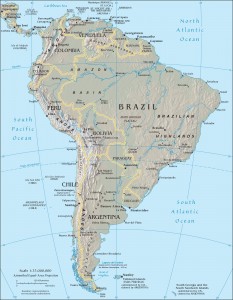Planning a Spanish School Gap Year
Increasingly, students are taking advantage of the year between high school and higher education. This period is often referred to as a “gap year.” More and more young people are taking this time off to enhance their background before attending college. Why not plan a Spanish school gap year? You will enhance your education and travel to amazing places in the process.
Step 1. Start with an End Goal in Mind
Ask yourself how you would like your life to have improved after your “gap year.” Would you like to gain some volunteer experience, learn a new language, or become proficient at a new skill, such as a musical instrument? We will assume that since you are already reading this article, you are looking to improve your Spanish. Mastering a second language will provide you with a lifelong skill. Of course, when you are abroad it’s the ideal time to get some volunteer experience too.
Step 2. Set out your Dates
The term “gap year” may sound overwhelming until you realize that this period of time can actually be much shorter. In fact, many people just take off from mid-August until mid-December, in other words a time period that is roughly equivalent to a college semester. If you schedule your trip in this manner, you’ll be home for the holidays to plan for college. Another option is to go on one trip before the holidays and then go on an entirely different one afterward.
Step 3. Figure out Where to Go
This is where it starts to get tricky. If you want to study Spanish abroad, there are more than 80 locations to choose from! For a long-term program that lasts over a month, Spain might be out of reach due to the high costs while in Europe. A trip to Spain could reach $5,000 or more when all expenses are considered. Traveling to South America instead is a great idea. However, keep in mind that Venezuela, Bolivia, Ecuador and Colombia all have security issues. Chile, Argentina, Uruguay, and Peru, on the other hand, are more developed. In the end, your best experience may come from selecting multiple locations in Latin America.
Step 4. Choose the Best Program Provider
Select an established provider that has a good reputation and knows your preferred destination well. Further, make sure the program change policies are flexible when you study Spanish abroad. After all, you need to be prepared to adapt your trip if there is something you don’t like. However, what is even more likely is that you will find something you love and won’t want to leave!
Step 5. Prepare Adequately for Your Trip
Many students worry about communication issues during their travels. The best thing to do is get a Skype in number, which you can easily program to forward international calls to a local cell phone. You can often rent cell phones inexpensively at the airport in various countries. That way your friends and family can have the same number for you and you won’t pay roaming charges. Believe it or not, roaming charges can amount to around $4 per minute! Instead you will just pay the forwarding charges, which only amount to about 15 cents per minute.
Make sure that you stay organized and really do put some thought and consideration into the program provider that you choose. If you follow the steps outlined in this article, your Spanish school gap year is likely to go very smoothly. You will return home feeling refreshed and excited for college. Not to mention, you will have excellent knowledge of a foreign language that will serve to help you during the rest of your education.
The ECELA Gap Year program includes month-long Spanish school experiences in each of Argentina, Chile, and Peru. At the conclusion of your trip you will participate in a month long volunteer project with other recent high school graduates. For more information visit the ECELA website.
